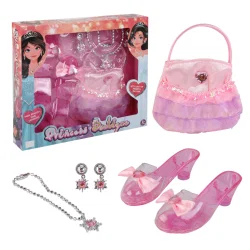Types of Dress-up and Role-play Toys
2024-04-17
Dress-up and role-play toys are beloved by children as they allow them to explore their imagination, creativity, and social skills through pretend play. Here are some popular types of dress-up and role-play toys:
1. Costumes: Dress-up costumes come in a variety of themes, such as superheroes, princesses, animals, occupations, and historical figures. These costumes often include clothing items, accessories, and sometimes props to help children transform into their chosen characters.
2. Role-Play Sets: Role-play sets are themed playsets that include pretend props and accessories to facilitate imaginative scenarios. Common themes include kitchen sets, doctor kits, tool sets, and grocery store playsets. These sets encourage children to engage in pretend play and develop social skills through role-playing interactions.
3. Pretend Play Tools and Accessories: Pretend play tools and accessories allow children to mimic real-world activities and occupations. These may include toy tools, gardening sets, tea sets, cooking utensils, and cleaning kits. Pretend play encourages children to engage in cooperative play, problem-solving, and communication skills.
4. Dress-Up Jewelry and Accessories: Dress-up jewelry and accessories include items like necklaces, bracelets, crowns, tiaras, hats, and wigs. These accessories allow children to enhance their dress-up costumes and express their personal style while engaging in imaginative play.
5. Character Role-Play Sets: Character role-play sets are themed around popular characters from movies, TV shows, and books. These sets often include costumes, accessories, and props related to the character, allowing children to immerse themselves in their favorite stories and pretend to be their favorite characters.
6. Costume Trunks: Costume trunks or dress-up storage kits contain a variety of dress-up items and accessories, making it easy for children to mix and match costumes and create their characters. These trunks encourage creativity and allow children to experiment with different roles and identities.
7. Puppets and Puppet Theaters: Puppets and puppet theaters provide opportunities for children to engage in storytelling and dramatic play. Children can use puppets to act out scenes, express emotions, and develop narrative skills while interacting with others.
Dress-up and role-play toys foster creativity, imagination, social skills, and emotional development in children. They encourage children to explore different roles, express themselves creatively, and develop empathy and understanding through pretend play interactions.



